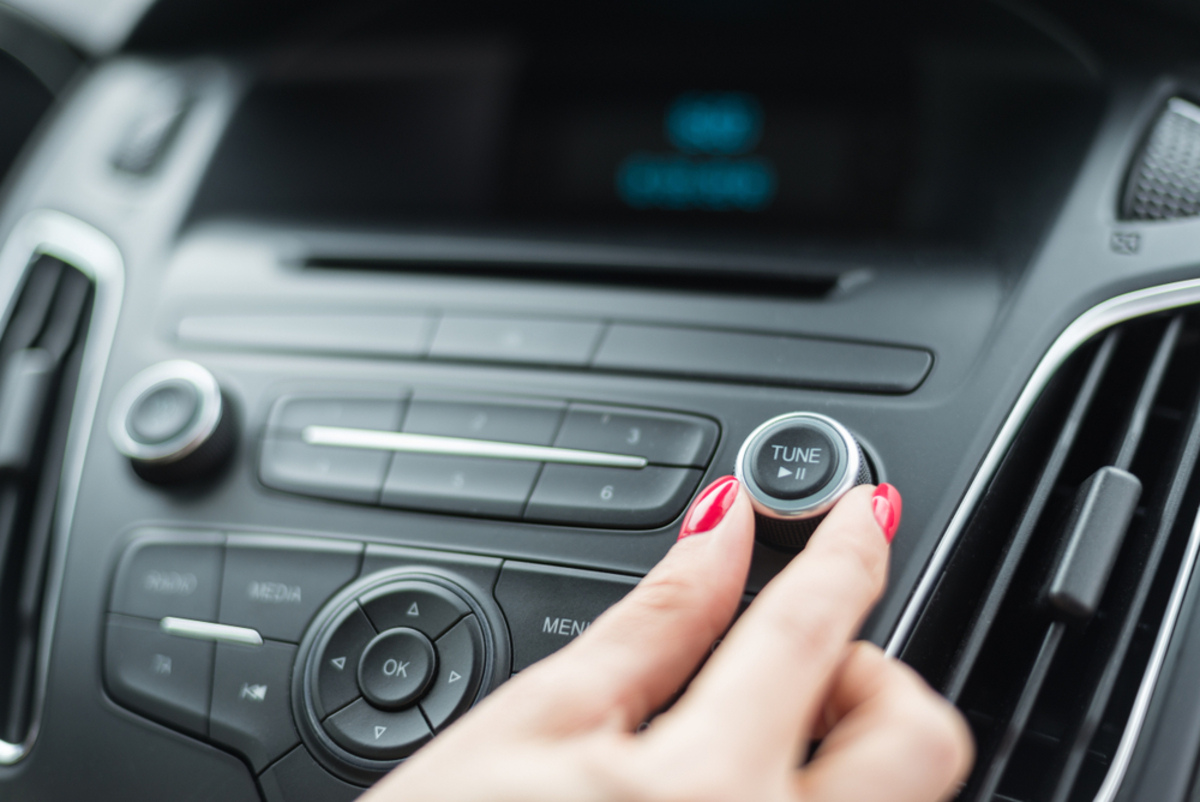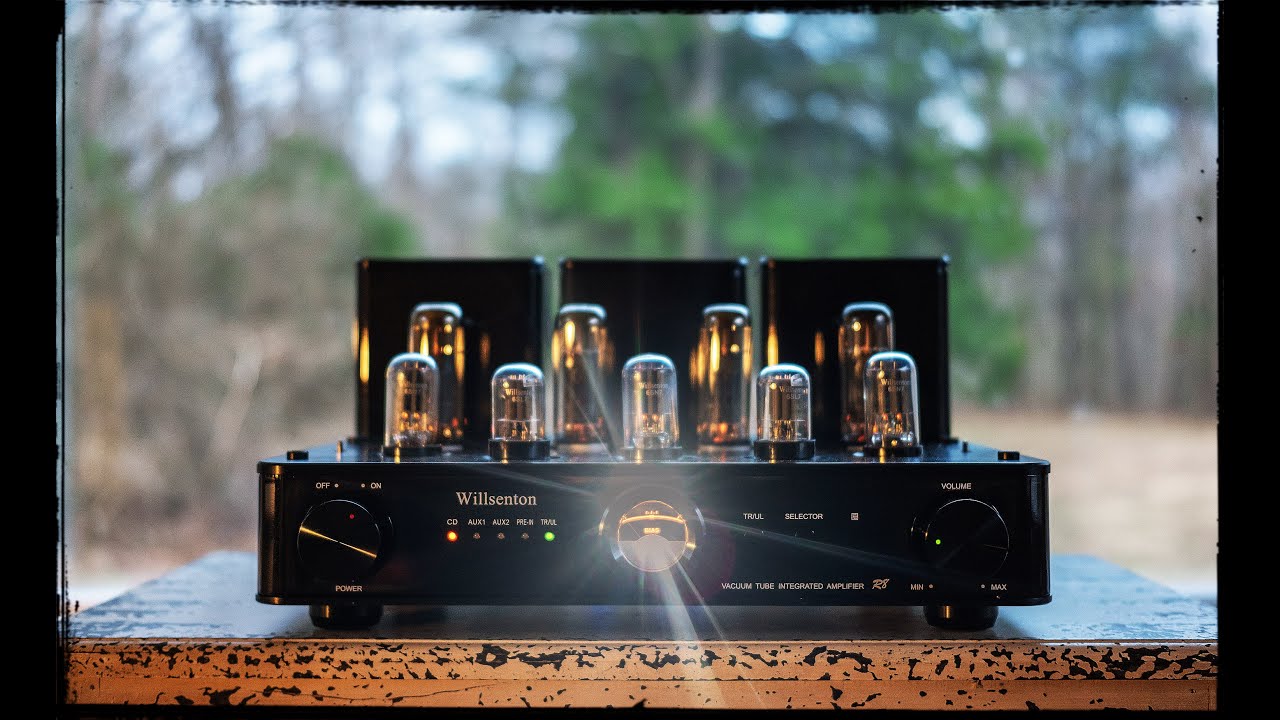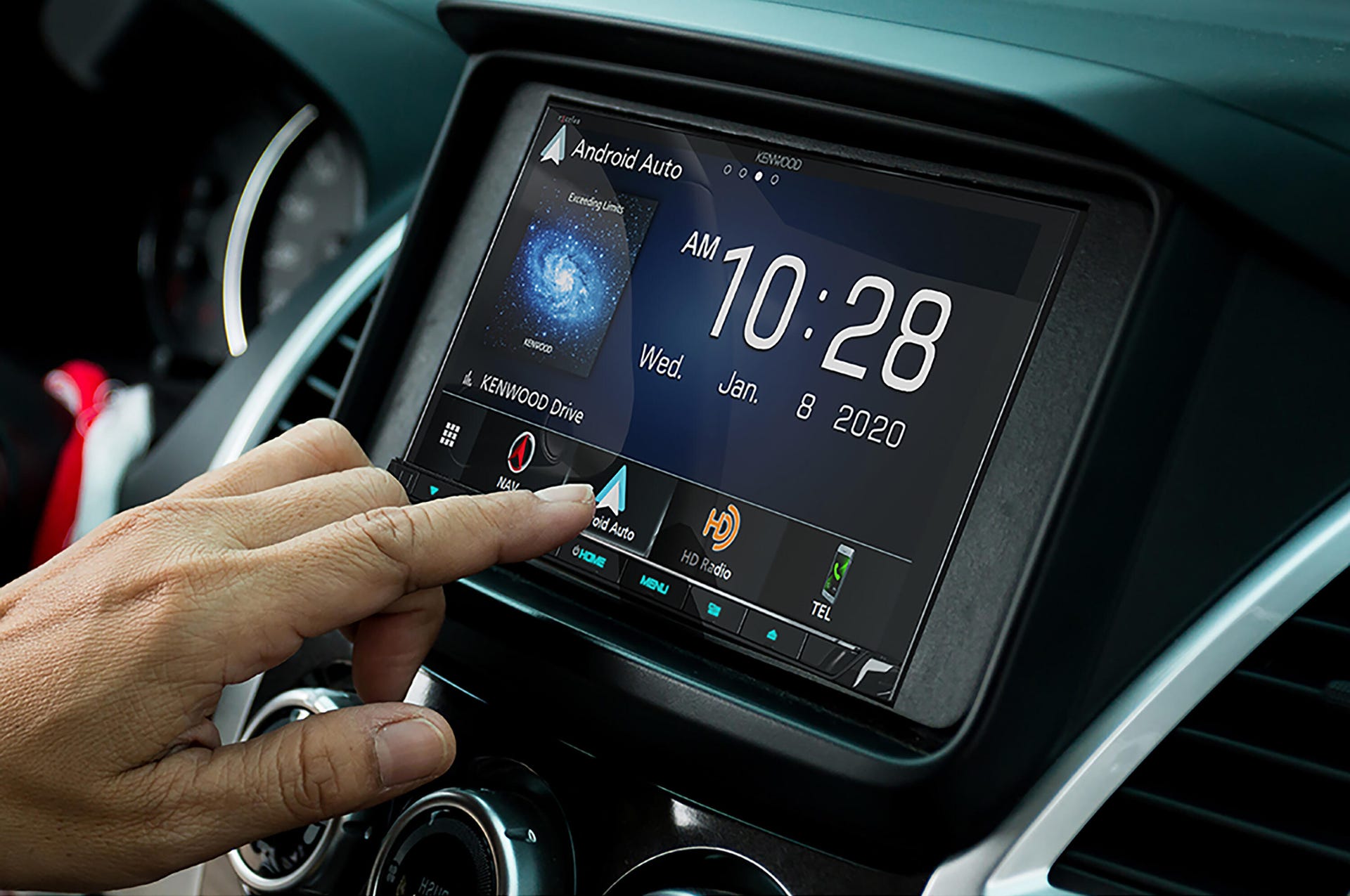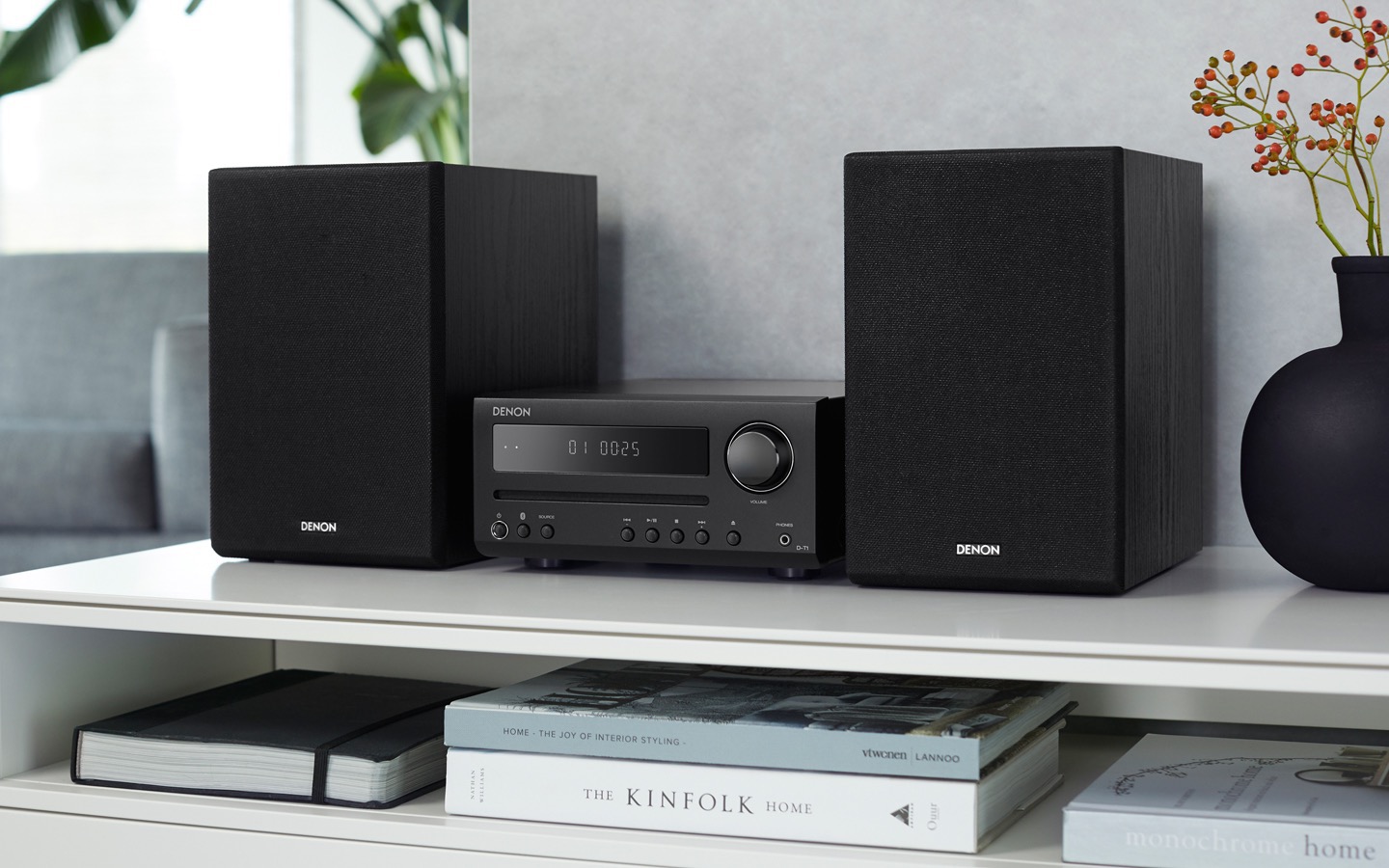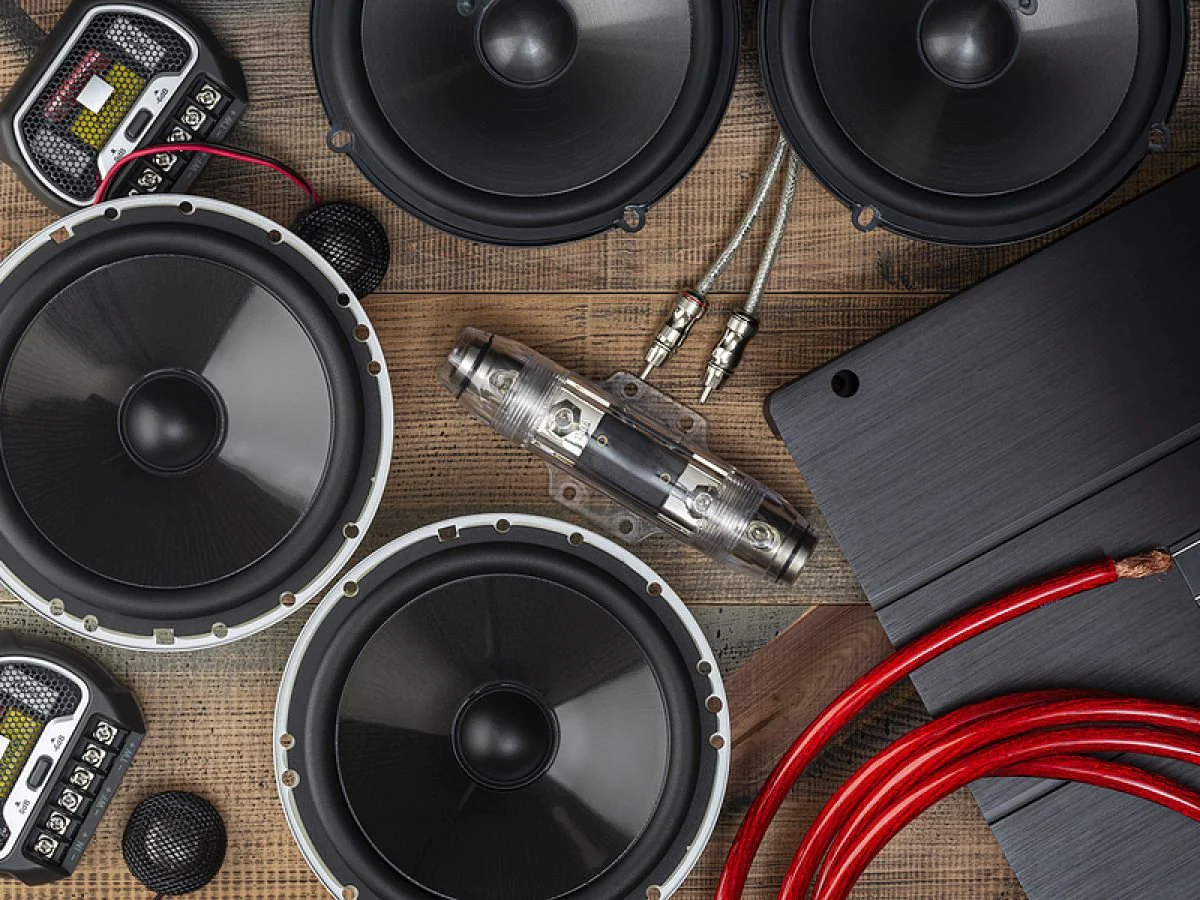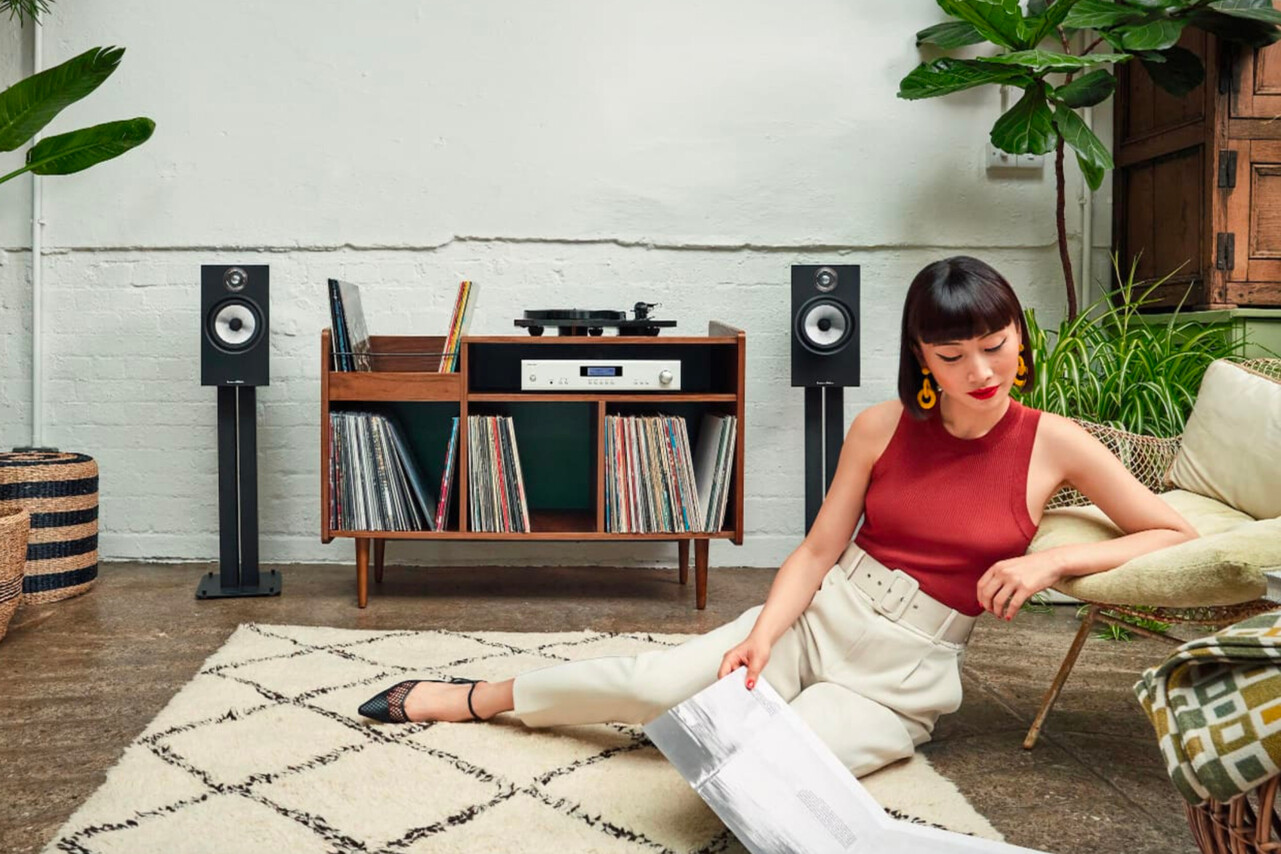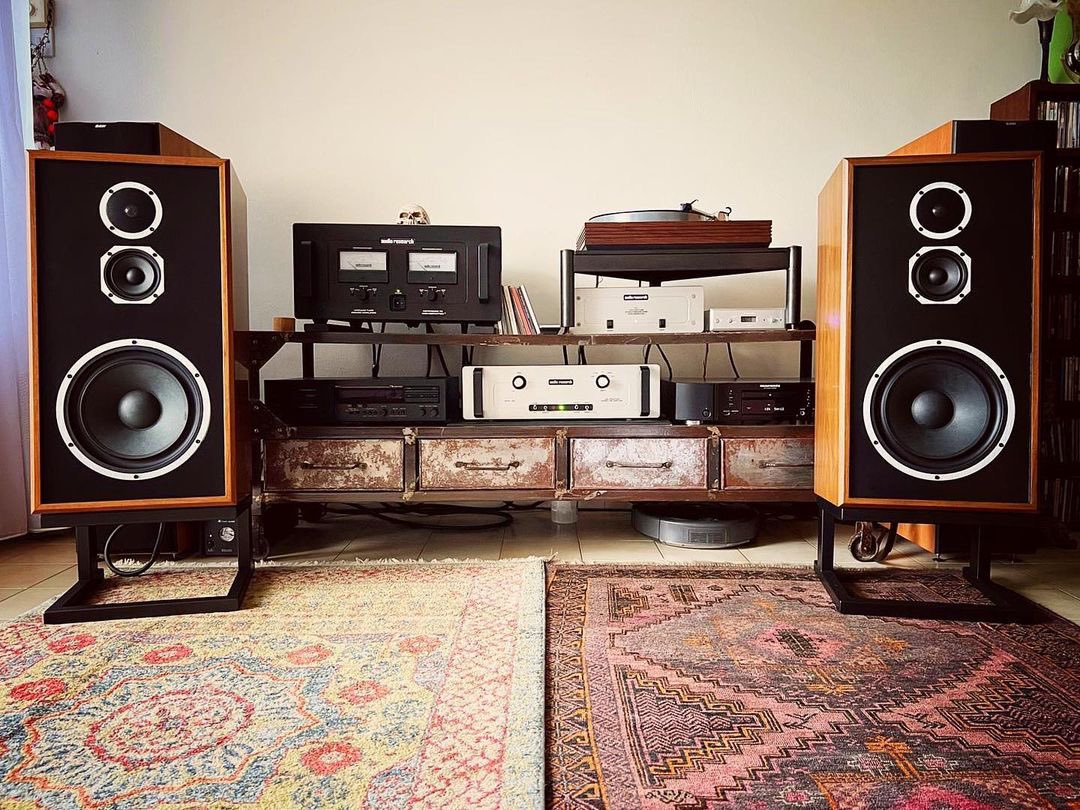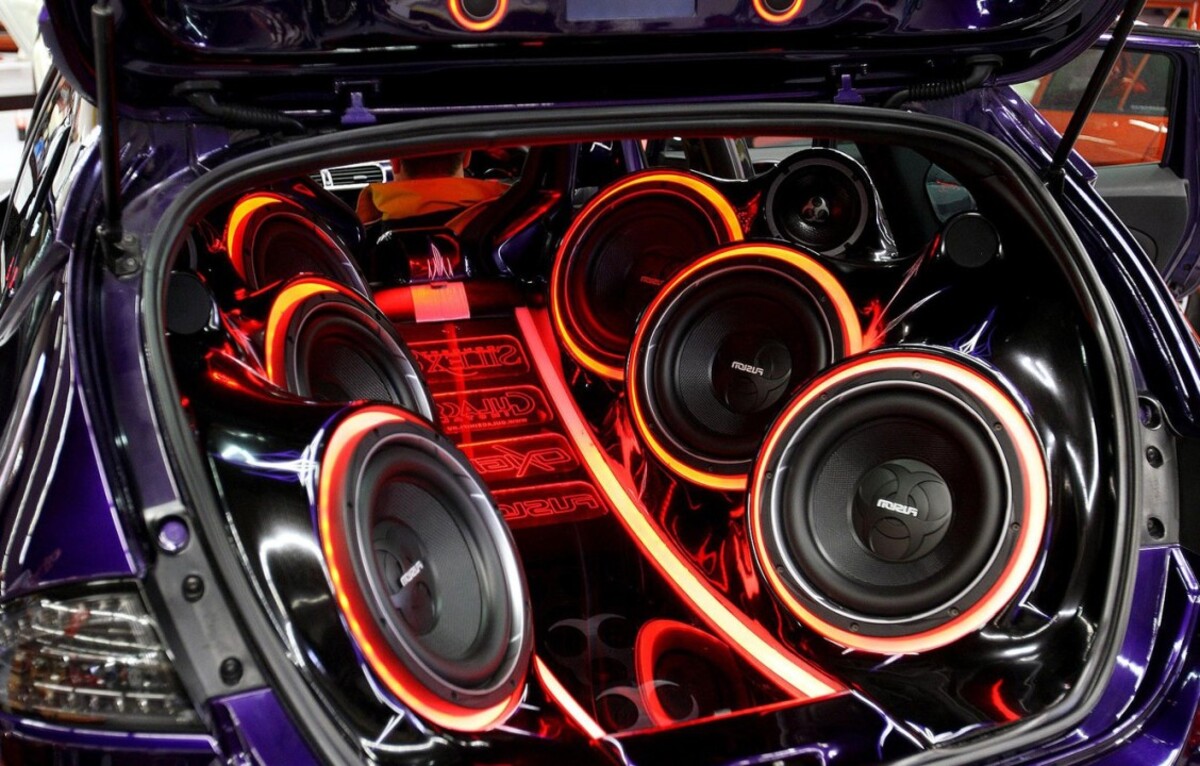Home>Production & Technology>Stereo>How To Build A Car Stereo System
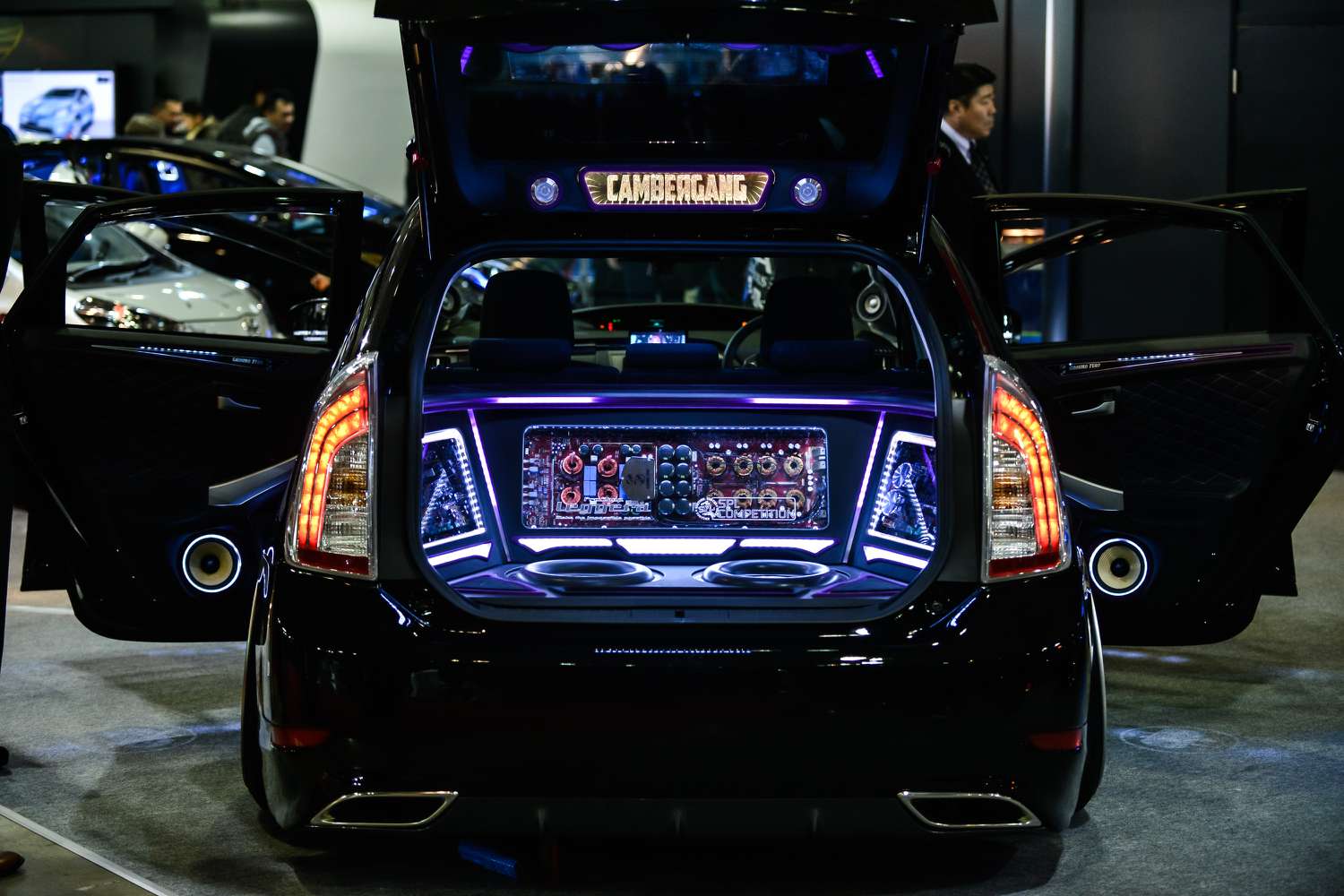

Stereo
How To Build A Car Stereo System
Modified: March 8, 2024
Learn how to build a high-quality car stereo system from scratch and enhance your audio experience on the road. Find the best stereo components, installation tips, and more.
(Many of the links in this article redirect to a specific reviewed product. Your purchase of these products through affiliate links helps to generate commission for AudioLover.com, at no extra cost. Learn more)
Table of Contents
Introduction
Welcome to the world of car audio enthusiasts! If you’re someone who loves music and enjoys the thrill of a great sound experience while driving, then building a car stereo system is a rewarding endeavor. A well-designed stereo system can turn your daily commute into a concert-like experience, immersing you in your favorite tunes with crystal-clear sound and powerful bass.
But with countless options available in the market, it can be overwhelming to know where to start. That’s why we’ve put together this comprehensive guide to help you navigate the world of car audio and build a stellar stereo system that meets your specific needs and preferences.
In this article, we will break down the key components of a car stereo system and guide you through the process of selecting the right head unit, speakers, amplifiers, and subwoofers. We’ll also cover important topics like wiring and installation, adjusting and tuning your system, and even adding some additional accessories to enhance your audio experience further.
Whether you’re a beginner looking to upgrade your factory-installed system or a seasoned audiophile seeking to create a high-end custom setup, this article will provide you with valuable insights and tips to make informed decisions.
Before we dive into the specifics, it’s important to understand that building a car stereo system involves a combination of technical knowledge, personal preferences, and budget considerations. While we aim to provide a comprehensive guide, keep in mind that the ultimate goal is to create a system that suits your unique taste and fits within your budget constraints.
So, let’s get started on our journey to building your dream car stereo system!
Understanding the Components
Before you embark on building your car stereo system, it’s crucial to understand the key components that make up the system. Familiarizing yourself with these components will help you make informed decisions when it comes to selecting the right equipment for your setup. The main components of a car stereo system include the head unit, speakers, amplifiers, subwoofers, and wiring.
Head Unit: The head unit, also known as the car stereo receiver, is the control center of your audio system. It typically includes features such as a radio tuner, CD player, USB and auxiliary inputs, and Bluetooth connectivity. The head unit is responsible for the audio signal processing and sending the amplified signal to the speakers and subwoofers.
Speakers: Speakers are responsible for producing the sound that you hear in your car. They come in various sizes, typically ranging from 4 inches to 6×9 inches, and can be categorized into component speakers and coaxial speakers. Component speakers offer superior sound quality and allow for customization, while coaxial speakers are more budget-friendly and easier to install.
Amplifiers: Amplifiers are used to increase the audio signal strength and provide more power to the speakers. They help improve sound quality and allow you to achieve higher volumes without distortion. Amplifiers come in different sizes and configurations, such as mono, 2-channel, 4-channel, and multi-channel amplifiers, depending on your system’s requirements.
Subwoofers: Subwoofers are dedicated speakers designed to handle low-frequency sounds, especially deep bass. They add depth and impact to your music, enhancing the overall listening experience. Subwoofers come in various sizes and power ratings, and they can be installed in different configurations, including sealed, ported, or bandpass enclosures.
Wiring: Wiring is an essential part of any car stereo system. It includes power cables, speaker wires, RCA cables, and fuse holders, among others. Proper wiring ensures a clean and reliable electrical connection between the components, minimizing noise and maximizing performance.
By understanding the roles of these components, you can begin to visualize how they work together to create a well-balanced and powerful sound system in your car. In the following sections, we will explore each component in more detail, guiding you through the selection process and installation considerations. So, let’s dive deeper into each component and discover how to choose the right equipment for your car stereo system.
Choosing the Head Unit
The head unit is the heart of your car stereo system, providing control over your audio sources and serving as the interface for your music playback. When choosing a head unit, there are several factors to consider.
Compatibility: Make sure that the head unit you choose is compatible with your car’s make and model. It’s essential to check the dimensions, mounting options, and wiring harness compatibility to ensure a seamless installation.
Audio Sources: Determine which audio sources are important to you. Most head units offer AM/FM radio, CD playback, USB, auxiliary input, and Bluetooth connectivity. If you rely heavily on streaming services, ensure that the head unit supports Apple CarPlay, Android Auto, or other smartphone integration options.
Power Output: Look for a head unit with sufficient power output to drive your speakers. The power output is measured in watts per channel (WPC). Consider the RMS power rating rather than the peak power rating, as it provides a more accurate representation of the head unit’s continuous power output.
User Interface: Pay attention to the user interface and ease of use. Look for a head unit with an intuitive interface, clearly labeled buttons, and a responsive touchscreen if applicable. Consider factors like display size, readability in different lighting conditions, and customization options.
Sound Adjustment: A good head unit should offer a range of sound adjustment options, such as equalizer presets, customizable EQ, time alignment, and crossover settings. These features allow you to fine-tune the audio to your preferences and compensate for the acoustic properties of your car’s interior.
Expandability: Consider future expansion options when choosing a head unit. Look for head units with multiple preamp outputs if you plan to add amplifiers. Additionally, consider head units with expandability options like satellite radio, HD radio, or compatibility with rear-seat entertainment systems.
Budget: Set a budget for your head unit, keeping in mind that higher-end models typically offer better sound quality, more features, and better build quality. However, there are also budget-friendly options available that can still deliver satisfactory performance.
By considering these factors, you can narrow down your choices and find a head unit that best suits your needs and preferences. It’s also worth reading reviews and seeking recommendations from car audio enthusiasts or professionals to ensure you make an informed decision. Once you have chosen the right head unit, the next step is selecting the speakers that will complement your audio setup.
Selecting Speakers
The speakers in your car stereo system play a critical role in delivering high-quality sound. When selecting speakers, there are a few factors to consider to ensure optimal performance and a great listening experience.
Size and Configuration: Determine the speaker sizes that will fit your car’s speaker locations. Common sizes include 6.5 inches for door speakers and 6×9 inches for rear deck speakers. Make sure to measure your available space and check your car’s specifications to ensure compatibility. Additionally, consider whether you want component or coaxial speakers. Component speakers provide better sound quality but require separate woofers, tweeters, and crossovers, while coaxial speakers are easier to install and have all the components built into a single unit.
Power Handling: Look for speakers that can handle the power output of your head unit or amplifier. Consider both the RMS and peak power handling ratings. It’s important to match the power handling capabilities of the speakers with the power output to avoid distortion or potential damage to the speakers.
Sensitivity: Speaker sensitivity refers to how loud a speaker can play with a given amount of power. Higher sensitivity speakers require less power to produce the same volume level compared to speakers with lower sensitivity. If you have a low-powered system, opt for speakers with higher sensitivity for better performance.
Frequency Response: Pay attention to the frequency response range of the speakers. This indicates the range of frequencies that the speakers can reproduce accurately. Wider frequency response allows for more detailed sound reproduction, especially in the low and high-frequency ranges.
Build Quality and Materials: Consider the build quality and materials used in the speakers. Look for speakers with sturdy construction and cone materials like polypropylene or woven fabrics for durability and improved sound reproduction. Additionally, check for features like rubber surrounds to enhance speaker longevity and prevent distortion.
Sound Signature: Different speakers have different sound signatures, which can be described as warm, neutral, or bright. This refers to how the speakers reproduce sound and can impact the overall listening experience. Consider your personal preference and the type of music you listen to when choosing speakers with a suitable sound signature.
Budget: Set a budget for your speakers, keeping in mind that higher-quality speakers generally come with a higher price tag. It’s important to find a balance between your budget and the level of sound quality you desire.
Lastly, consider listening to demo setups or reading reviews to get an idea of how the speakers perform. This can help you make an informed decision and find speakers that suit your taste and audio preferences. Once you have selected the speakers, it’s time to move on to choosing the right amplifier to power your audio system.
Deciding on an Amplifier
An amplifier is an essential component of a car stereo system as it provides the power necessary to drive the speakers and enhance the overall sound quality. When choosing an amplifier, there are several factors to consider to ensure compatibility and optimal performance.
Power Output: Consider the power output requirements of your speakers. Look for an amplifier that can provide enough power to match the speakers’ power handling capabilities. Make sure to compare the RMS power ratings of the amplifier and speakers to ensure they are compatible.
Number of Channels: Determine how many channels you need for your system. For a basic setup with four speakers, a 4-channel amplifier will suffice. If you plan to add a subwoofer, you may opt for a 5-channel amplifier or a separate mono amplifier for the subwoofer.
Amplifier Class: Amplifiers come in different classes, each with its own characteristics. Class A amplifiers provide the best sound quality but are less efficient and generate more heat. Class AB amplifiers are a popular choice as they offer a good balance between sound quality and efficiency. Class D amplifiers are highly efficient and compact, making them suitable for installations with limited space.
Signal-to-Noise Ratio (SNR): The SNR indicates the quality of the audio signal produced by the amplifier. A higher SNR value ensures a cleaner and more accurate sound reproduction, minimizing background noise or distortion. Look for an amplifier with a high SNR for optimal audio performance.
Crossover and Equalizer Settings: Consider the available crossover and equalizer settings on the amplifier. These allow you to fine-tune the sound and tailor it to your preferences. Look for adjustable high-pass and low-pass filters to ensure proper frequency distribution between speakers and subwoofers.
Stability and Protection Features: Look for amplifiers with built-in protection features to safeguard against potential damage. Features like thermal protection, short circuit protection, and over-current protection can help prolong the lifespan of the amplifier and ensure reliable performance.
Budget: Set a budget for your amplifier, considering the power requirements and the level of sound quality you desire. Higher-end amplifiers generally offer better performance and additional features but come at a higher price point.
It’s also worth noting that before selecting an amplifier, it’s important to determine the available space in your car for installation. Amplifiers come in various sizes, so make sure to measure the available space and choose an amplifier that fits comfortably.
Once you have chosen the right amplifier to power your speakers and subwoofers, it’s time to consider adding a subwoofer to enhance the low-frequency performance and bass response of your car stereo system. We will explore subwoofer selection in the next section.
Subwoofer Selection
A subwoofer is a dedicated speaker that reproduces low-frequency sounds, providing deep bass and enhancing the overall audio experience in your car stereo system. When selecting a subwoofer, there are a few key factors to consider.
Size: Subwoofers come in various sizes, typically ranging from 8 inches to 15 inches. The size you choose depends on your personal preference, available space in your car, and the level of bass impact you desire. Keep in mind that larger subwoofers generally produce deeper and more powerful bass.
Power Handling: Consider the power handling capabilities of the subwoofer. Check the RMS power rating to ensure compatibility with your amplifier. Matching the power handling of the subwoofer and amplifier is crucial to avoid distortion and potential damage to the equipment.
Enclosure Type: Subwoofers can be installed in different enclosure types, each offering distinct sound characteristics. Sealed enclosures provide tight and accurate bass, while ported enclosures enhance bass output and are more efficient. Bandpass enclosures offer a combination of both sealed and ported characteristics, emphasizing specific frequency ranges.
Impedance: Pay attention to the subwoofer’s impedance, which affects its compatibility with your amplifier. Most car audio systems utilize subwoofers with either a 2-ohm or 4-ohm impedance. Ensure that the impedance of your subwoofer matches the capabilities of your amplifier for optimal performance.
Frequency Response: Look for subwoofers with a wide frequency response range that can accurately reproduce low-frequency sounds. A broader frequency response allows for a deeper and more detailed bass response.
Type of Music: Consider the type of music you typically listen to when selecting a subwoofer. If you enjoy genres like hip-hop, rap, or electronic music that heavily rely on deep bass, a larger subwoofer with high power handling capabilities may be suitable. For a more balanced sound across different music genres, a smaller subwoofer can still provide a solid bass foundation.
Budget: Set a budget for your subwoofer, considering the size, power handling, and sound quality you desire. Higher-quality subwoofers tend to offer better bass performance and build quality but may come at a higher price point.
It’s also worth noting that subwoofers require an appropriate enclosure for optimal performance. Whether you opt for a pre-built enclosure or choose to build a custom one, ensure that it is properly sized and designed for the specific subwoofer you have selected.
Once you have chosen the right subwoofer and enclosure, the next step is to wire and install your car stereo system. We will cover this important step in the next section to ensure a smooth and efficient installation process.
Wiring and Installation
Wiring and installation are crucial steps in building a car stereo system, as they ensure proper connectivity and optimal performance. Here are the key aspects to consider when it comes to wiring and installation:
Power and Ground Cables: Use appropriate gauge power and ground cables to ensure a reliable and efficient power supply to your audio components. The gauge of the cables depends on the power requirements of your system. Thicker cables generally provide better power transmission, especially for higher-powered setups.
Speaker Wires: Use high-quality speaker wires to connect your speakers to the amplifier or head unit. Opt for thicker gauge wires to minimize signal loss and maximize sound quality. Trim the wires to the appropriate length and securely connect them to the respective terminals of the speakers and amplifier.
RCA Cables: If your head unit and amplifier have RCA connections, use shielded RCA cables for transmitting audio signals. Ensure that the RCA cables are properly routed away from power cables to minimize potential interference or noise.
Fuse Holders: Install appropriate fuse holders near the power connections to protect your system from electrical faults. Use the recommended fuse rating for your setup to prevent damage to your components in case of power surges or short circuits.
Mounting and Placement: Properly mount your head unit, amplifier, and speakers in suitable locations within your car. Ensure that they are securely installed to prevent vibrations or rattling. Consider factors like visibility, accessibility, and space limitations when choosing the placement for each component.
Grounding: Establish a solid and clean ground connection for your components. Locate a metal surface within your car’s chassis and securely attach the ground wire to it. Remove any paint or rust to ensure good conductivity.
Integration with Existing Systems: If you have existing features like steering wheel controls, backup cameras, or navigation systems, ensure that your new car stereo system is compatible and properly integrated with these components. Follow the manufacturer’s instructions or consult a professional for assistance if needed.
Testing and Troubleshooting: After completing the installation, test your car stereo system to ensure all components are functioning correctly. Check for any wiring issues, sound imbalances, or noise interference. Troubleshoot as necessary and make adjustments to optimize the system’s performance.
Seek Professional Help if Needed: If you’re unsure about any aspect of the wiring and installation process or if you want to ensure a flawless installation, it’s always a good idea to seek professional help from certified car audio installers. They have the knowledge and expertise to handle complex installations and provide recommendations specific to your vehicle.
By paying attention to these wiring and installation considerations, you can ensure a clean, reliable, and professional installation for your car stereo system. Once the wiring is complete, it’s time to adjust and tune your system for the best sound quality, which we will explore in the next section.
Adjusting and Tuning the System
Once you have installed your car stereo system, it’s important to take the time to adjust and tune it for optimal sound quality. Proper adjustment and tuning will help you achieve a balanced and immersive audio experience. Here are some steps to follow:
Balance and Fade: Adjust the balance and fade settings to ensure that the sound is evenly distributed among the speakers. The balance setting adjusts the left-to-right speaker balance, while the fade setting adjusts the front-to-rear balance. Aim for a balanced soundstage that suits your listening position.
Equalizer Settings: Most head units and amplifiers come with built-in equalizer settings. Use these settings to adjust the audio frequencies to your liking. Experiment with different equalizer presets or manually adjust settings like bass, midrange, and treble to achieve the desired tonal balance. Consider the acoustics of your car’s interior when making these adjustments.
Time Alignment: If your head unit or amplifier has time alignment settings, utilize them to improve the sound staging and imaging. Time alignment compensates for the distance between your speakers and your listening position, ensuring that the sound from each speaker arrives at your ears simultaneously. This creates a more realistic and immersive sound experience.
Crossover Settings: Set the crossover points for your speakers and subwoofers. The crossover settings determine the frequency range each component handles. Adjusting the crossover points ensures that the speakers and subwoofers work together harmoniously, preventing overlap and distortion. Follow the manufacturer’s recommendations or experiment to find the best crossover settings for your setup.
Subwoofer Level and Phase: Fine-tune the subwoofer level and phase settings. Adjust the subwoofer level to achieve a balanced bass response without overpowering the rest of the audio. The phase setting determines the alignment of the subwoofer’s sound waves with the other speakers. Experiment with different phase settings to achieve the tightest and most coherent bass response.
Listening Tests: Conduct listening tests with a variety of music genres and audio sources to evaluate the performance of your system. Pay attention to clarity, detail, imaging, and bass response. Make adjustments as necessary to achieve the desired sound quality and balance.
Consider Room Acoustics: Keep in mind that your car’s interior and overall acoustics play a significant role in the audio performance. Factors like window placement, upholstery materials, and overall cabin design can affect sound reflections and resonance. Consider using sound damping materials or strategically placing acoustic treatments to minimize unwanted reflections and improve overall audio quality.
Remember, adjusting and tuning your car stereo system is a subjective process that depends on your personal preferences and the specific characteristics of your vehicle. Take the time to experiment, trust your ears, and make incremental adjustments until you achieve the desired sound quality.
With your car stereo system finely tuned, you can now enjoy your favorite music in exceptional clarity and depth. However, if you desire additional features or enhancements, you may consider adding some accessories to complement your system, which we will discuss in the next section.
Adding Additional Accessories
While your car stereo system is now complete and optimized, you may want to consider adding some additional accessories to enhance your audio experience or improve the functionality of your system. Here are a few popular accessories to consider:
Sound Damping Materials: Sound damping materials, such as acoustic insulation, can help reduce road noise and vibrations, resulting in cleaner and more impactful sound reproduction. Install sound damping materials in the doors, floor, and trunk area to improve the overall acoustics of your car’s interior.
Signal Processors: Signal processors, like digital sound processors (DSP), can provide advanced audio control and customization options. They allow you to fine-tune the soundstage, adjust time delay, and apply advanced equalization settings. Signal processors are especially valuable if you desire a high level of audio precision and customization.
Amplifier Wiring Kits: Upgrading your amplifier wiring kit can improve power delivery and reduce electrical interference. High-quality wiring kits include proper power and ground cables, fuse holders, and connectors to ensure efficient power transfer while minimizing signal degradation.
High-Quality Interconnects: Consider upgrading your RCA interconnect cables to high-quality ones, especially if you’re using longer cables or have a high-end system. Premium interconnects can minimize signal loss and reduce the chances of interference, resulting in improved audio fidelity.
Subwoofer Enclosures: If you opted for a separate subwoofer, a custom-built subwoofer enclosure can significantly enhance bass performance. There are pre-fabricated enclosures available, or you can have one custom-built to fit the specific dimensions of your subwoofer and your vehicle’s available space.
Backup Cameras: Adding a backup camera to your car stereo system can improve safety and convenience while reversing. You can install a rearview camera that integrates with your head unit’s display, allowing you to see a clear view of obstacles behind your vehicle.
Bluetooth Adapters: If your car stereo system doesn’t have built-in Bluetooth connectivity, you can add a Bluetooth adapter that seamlessly connects your mobile device to the head unit. This allows you to stream music wirelessly and make hands-free calls while driving.
Steering Wheel Control Adapters: If your car has steering wheel-mounted audio controls, you can add a steering wheel control adapter that integrates with your new head unit. This enables you to continue utilizing the convenient audio controls without losing functionality during the upgrade.
Mobile Device Mounts: Consider adding a high-quality mount or dock for your mobile device, allowing for secure placement and easy access while using navigation apps or streaming music while driving.
When considering additional accessories, ensure compatibility with your existing system and make sure to follow the manufacturer’s instructions for proper installation. Remember that each accessory serves a specific purpose, so choose the ones that align with your needs and preferences.
With the addition of these accessories, you can further customize your car stereo system and enhance its functionality and versatility. Take your time to research and select accessories that will complement and elevate your overall audio experience.
Now that you have a comprehensive understanding of building a car stereo system, from selecting the components to fine-tuning and adding accessories, you are well-equipped to embark on this rewarding journey. Enjoy the immersive and high-quality sound experience that awaits you on the open road!
Conclusion
Building a car stereo system is an exciting and fulfilling endeavor that allows you to transform your daily drives into immersive audio experiences. By understanding the components, selecting the right equipment, wiring and installing with precision, and fine-tuning the system, you can create a car audio setup that perfectly suits your preferences.
Start by choosing a head unit that offers the features and compatibility you desire. Select speakers that deliver the sound quality and power handling capabilities that meet your needs. Find an amplifier that can efficiently power your system and a subwoofer that adds depth and impact to your bass response. Pay attention to wiring and installation for reliable connectivity and optimal performance.
After installation, take the time to adjust and tune your system, considering factors like balance, equalization, time alignment, and crossover settings. Conduct listening tests and make incremental adjustments to achieve the desired sound quality and clarity.
If desired, you can further enhance your audio experience by adding accessories such as sound damping materials, signal processors, high-quality interconnects, or backup cameras.
Remember that building a car stereo system is a journey that involves personal preferences, budget considerations, and a balance between technical knowledge and artistic flair. Trust your ears and make adjustments accordingly to achieve the sound signature that brings you joy.
Lastly, if you’re unsure about any step or seek professional assistance, consult with certified car audio installers or seek guidance from experienced car audio enthusiasts.
With proper planning, thoughtful selection of components, meticulous installation, and careful tuning, you can create a car stereo system that delivers a captivating sound experience on every drive. Enjoy the melodies, embrace the bass rumbles, and make your car a rolling concert hall!

